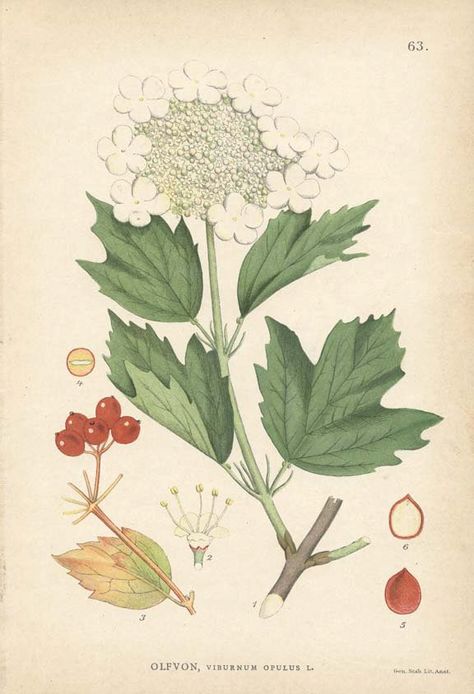Dr Clare Materia Medica
Introduction to the Dispensing of Dr Clare’s Blended Herbs
Special | A | B | C | D | E | F | G | H | I | J | K | L | M | N | O | P | Q | R | S | T | U | V | W | X | Y | Z | ALL
C |
|---|
Cramp Bark
Also known as: Common Guelder-Rose, Cranberry Bush. Scientific Name: Viburnum opulus. Botanical Family: Adoxaceae/Viburnaceae (formerly known as Caprifoliaceae). Part used: Bark and root bark.
Traditional Use. Cramp bark has antispasmodic (relieves muscle spasms), anti-inflammatory (relieves inflammation), nervine (calms and soothes the nerves), hypotensive (lowers blood pressure), astringent (causes local contraction), emmenagogic (induces menstruation ), and sedative (reduces activity and excitement) properties.
Safety. There are no reports of safety concerns regarding Cramp Bark.
Pregnancy: Refer to a Medical Herbalist. Breastfeeding: Refer to a Medical Herbalist. Constituents Hydroquinines; arbutin, methylarbutin and traces of free hydroquinone. Sesquiterpene dialdehyde fraction; viopudiol. Coumarins; such as scopoletinans, esculatin. Triterpinoids; including oleanic acid and ursolic acid derivatives. Iridoid glysoside esters.
Scientific evidence. No clinical research has been done. Mechanism of action. At least two active constituents have been identified, scopoletin and viopudial. These constituents appear to have smooth muscle antispasmodic effects in vitro. Viopudial appears to have cholinergic effects by inhibiting acetylcholinesterase. The effect opposes the dominence of the sympathetic nervous system and relaxes the tone in smooth muscles. There is evidence of anti-inflammatory effects.
One study showed that the administration of viopudial, a Viburnum opulus component, produces slowing of the heart rate, lowering of blood pressure, and some decrease in contractility of heart muscle. This action is by balancing the sympathetic and parasympathetic nervous system tone in the body. Experimental evidence indicates that viopudial's mechanism of action is partly due to its effects on cholinesterase. In vitro demonstrations of a competitive inhibitory effect on both acetylcholinesterase and butyrylcholinesterase showed viopudial to be relatively weak when compared to the known potent inhibitor, physostigmine. Additional mechanistic effects, such as a direct musculotrophic action, may also be responsible for the overall activity. 8 One animal study shows that proanthocyanidin constituents of Viburnum opulus exert a potent gastro-duodenoprotective effect by increasing nitrous oxide in the tissues, suppressing lipid peroxidation and mobilizing antioxidant activity and changes in the gastroduodenal mucosa of rat.7 Other studies show that Viburnum opulus exhibits anti-oxidant effects.9
Adverse reactions. None reported.
Possible interactions with herbs and supplements. None known.
Possible interactions with drugs. None known.
Possible interactions with foods. None known.
Interactions with laboratory tests. None known.
Effects on diseases or conditions. None known.
Dosage. Recommended dose: 3-10mls per day 1:5 tincture 30% alcohol. Decoction: range from ½ to 6 tsps. per day. Powder/capsule: range from 1-4gms per day. Raw herb: 2-4gms per day.R8 pp.230 Liquid extract: 2-8ml/day.
The recommended dose of Dr Clare’s Joint Support Blend provides 3mls per day of 1:3 Tincture in 15mls daily, at a dose of 5mls three times a day. This is equivalent to 375-750mgs per day.
References. 1. Exp Biol Med (Maywood) June 1972 vol. 140 no. 2 457-461 Viopudial, a Hypotensive and Smooth Muscle Antispasmodic from Viburnum opulus.John A. Nicholson,Thomas D. Darby, Charles H. Jarboe
2. Charles H. Jarboe , Karimullah A. Zirvi , John A. Nicholson , Charlotte M. Schmidt. Scopoletin, an Antispasmodic Component of Viburnum opulus and prunifolium J. Med. Chem., 1967, 10 (3), pp 488–489
3. Antioxidant properties of Viburnum opulus and Viburnum lantana growing in Turkey. Dr Mehmet Levent Altun, Gülçin Saltan Çitoğlu, Betül, Sever Yilmaz and Tülay Çoban International Journal of Food Sciences and Nutrition 2008, Vol. 59, No. 3 , Pages 175-180
4. Antinociceptive and Anti-inflammatory Activities of Viburnum lantana. Pharmaceutical Biology2007, Vol. 45, No. 3 , Pages 241-245 B. Sever Yilmaz, G Saltan Citoglu, M.L. Altun and H. Ozbek
5. Zeng LJ, Xing JB, Li P. China Journal of Chinese Materia Medica [2000, 25(3):184-188]
6. Ilkay Erdogan-Orhan, Mehmet Levent Altun, Betül Sever-Yilmaz, and Gülçin Saltan. Anti-Acetylcholinesterase and Antioxidant Assets of the Major Components (Salicin, Amentoflavone, and Chlorogenic Acid) and the Extracts of Viburnum opulus and Viburnum lantana and Their Total Phenol and Flavonoid Contents Journal of Medicinal Food. April 2011, 14(4): 434-440.
7. Zayachkivska OS1, Gzhegotsky MR, Terletska OI, Lutsyk DA, Yaschenko AM, Dzhura OR. Influence of Viburnum opulus proanthocyanidins on stress-induced gastrointestinal mucosal damage. J Physiol Pharmacol. 2006 Nov;57 Suppl 5:155-67.
8. Viopudial, a hypotensive and smooth muscle antispasmodic from Viburnum opulus. J A Nicholson, T D Darby, C H Jarboe Proceedings of The Society for Experimental Biology and Medicine 07/1972; 140(2):457-61.
9. Andreeva T.I, Komarova E.N, Yusubov M. S, Korotkova E.I. Antioxidant activity of cranberry tree (Viburnum Opulus L.) bark extract. Pharmaceutical Chemistry Journal 10-2004, Volume 38, Issue 10, pp 548-550
| |

 Cramp Bark
Cramp Bark